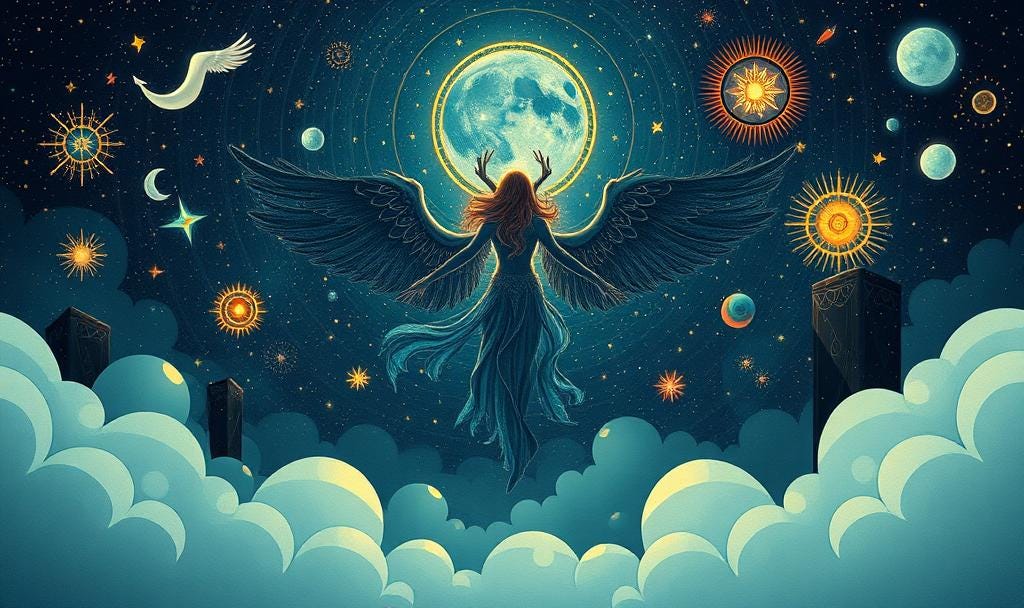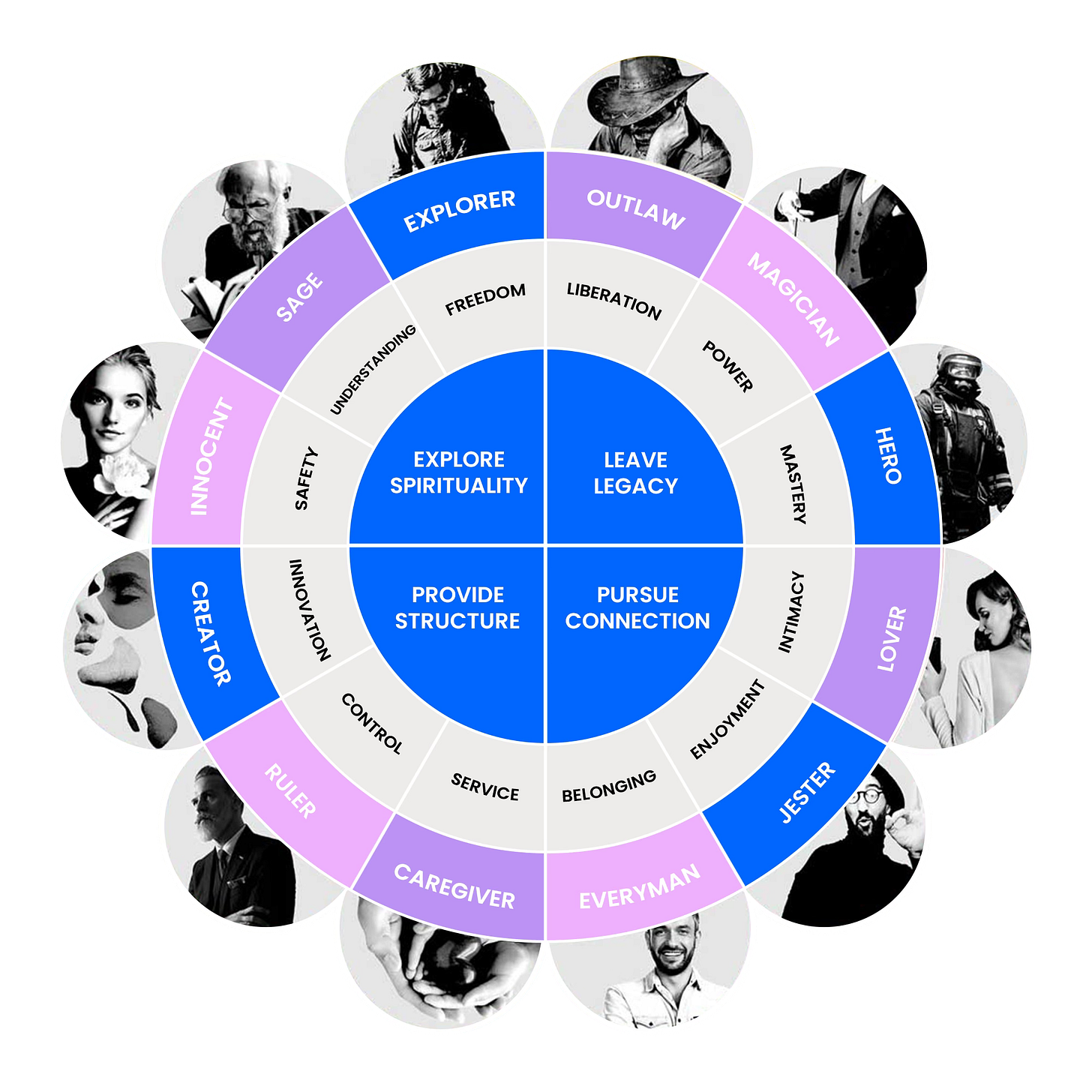Personal Myths
The most important question anyone can ask is; What myth am I living?
We all have a personal myth that drives our daily lives, career choices, relationships, and even decisions. A personal myth interprets our life journey and the beliefs we choose to live by. Our myth colours our reality, giving us a sense of direction, purpose, and identity. It is an internal narrative or story that guides our actions and helps us make sense of the world around us.
Personal myths can be both empowering and debilitating.
Understanding our personal myths can help us understand our struggles and successes. By recognizing the personal myth that informs our decisions and choices, we can be more conscious of our actions. We can even challenge our personal myth to create a healthier, more fulfilling life.
In a sense, our personal myth is like a filter through which we interpret the world. It can lead us down a path of self-sabotage, or it can be a source of strength. We can harness its power to help us grow, heal and make positive changes in our lives.
The first step in understanding our personal myth is to identify any beliefs that we’ve adopted in our lives. Such beliefs may include feelings of unworthiness, fear of failure, or a lack of confidence. Once we recognize these beliefs, we can begin to explore how they may be impacting our lives. We can then decide whether we want to keep these beliefs or challenge them and replace them with more positive ones.
Moreover, our personal myth can reflect our relationship with ourselves and the world around us. It can help us to recognize patterns of behaviour and assumptions that may be holding us back from achieving our goals and dreams.
Our personal myth is our individual story, formed from the influencers and experiences we’ve had throughout our lives. It is a powerful source of insight and understanding and by exploring our personal myth, we can gain valuable insight into our lives. Understanding our personal myth can open up new opportunities for growth, healing, and transformation.
Carl Jung and Myths
Carl Jung, a prominent Swiss psychiatrist, pioneered the study of myths and their impact on the human psyche. Jung believed that myths were not just stories that explain the natural world but reflections of the collective unconscious, containing powerful archetypal imagery and messages. According to Jung, myths reveal truths about the human experience, depicting universal themes and symbols such as death, rebirth, love, and courage.
For Jung, myths were the primary medium for understanding the deepest layers of the unconscious psyche. He believed that myths gave us insight into the inner life of the soul and our relationship with the spiritual realm. They are a language of symbols, metaphors, and imagery that allow us to make sense of our lives and the world around us.
Jung also saw myths as a means of collective healing. He believed that by engaging with mythological stories, we can understand our myths and gain a greater appreciation for life. Through this understanding, we can accept our shadow, heal our wounds, and move forward on our journey.
Carl Jung's study of myths and their connection to the collective unconscious can offer us valuable insight into our lives. By uncovering our personal myths, we can better understand our identity, relationships, and decisions. This understanding can help us to move forward on our journey of self-discovery, healing, and transformation.
Jung’s Mythic Archetypes
In the depth of the collective unconscious, Carl Jung believed that we each have archetypes or recurring motifs, that govern our behaviour, beliefs, and relationships. These archetypes are potent symbols, patterns, and stories deeply embedded in our collective psyche, from ancient myths and legends to modern films and books.
Jung identified four significant key archetypes – the Self, the Shadow, the Anima/Animus, and the Persona – representing a range of human experiences, such as relationships, emotions, and personal growth.
By understanding these archetypes, we can gain insight into our motivations, decision-making, and personal myths.
The Self is a universal archetype of balance, wholeness, and unity that Jung believed to be the centre of a person’s psyche. It is our true self, our soul.
The Shadow is a complex archetype of the repressed or hidden parts of the self. It represents our “dark side” and can frequently manifest as fear, aggression, or darkness.
The Anima/Animus is the archetype of the opposite sex within us, representing our inner masculine and feminine energy. It is a source of creativity and self-expression, and helps us to better understand our own gender dynamics.
The Persona is the archetype of our public “mask” – the self we present to the world. It is the characteristics, behavior, and expectations that we show to others, which often does not reflect the person we are inside.
By understanding the power of these archetypes, we can gain insight into our own personal myth. They can help us to identify our strengths, weaknesses, and blind spots, assisting us on our journey of self-discovery. Through understanding these archetypes, we can become more aware of our behaviour, motivations, and patterns in our life, allowing us to move forward and create a more fulfilling life.
Other Archetypes Jung spoke of include…
The Hero
It represents strength, courage, and the desire to overcome obstacles.
The Ruler
A natural leader with big ambitions, charisma, and an understanding of interpersonal politics.
The Caregiver
It symbolizes protection and nurturing and embodies the qualities of a selfless provider.
The Creator
The creative process inspires self-expression.
The Innocent
An eternal optimist who lacks guile and corruption and seeks the promise of paradise.
The Sage
Knowledgeable experts offering wisdom.
Other aspects of our mythic story include…
We can be one or all of these. They represent attitudes to our lives and, as said above, affect how we see and respond to the world.
Can you see yourself in any of these idealised archetypes?
Can you reflect on how each drives your behaviour?
Alan /|\






